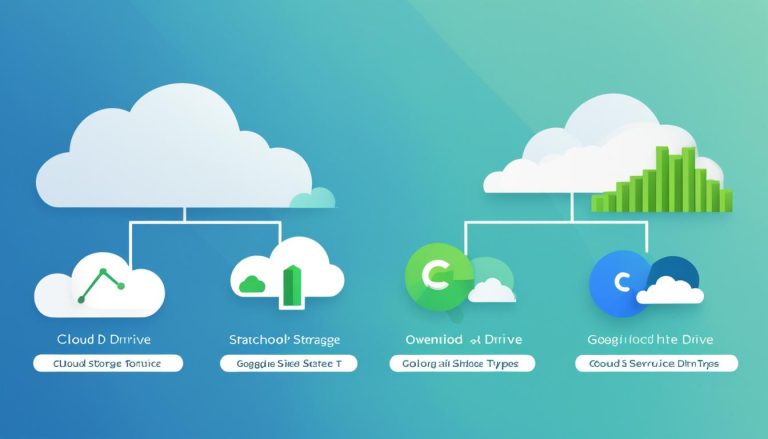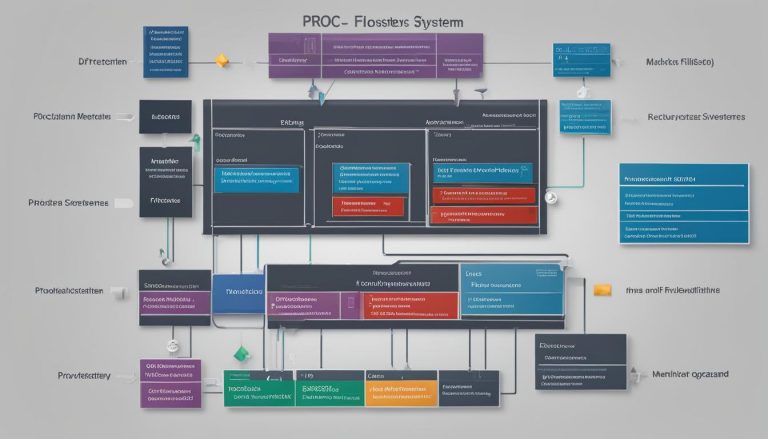Understanding the Concept: What is Recursion?
In the world of programming, recursion is a term that is frequently used. It involves a problem-solving approach where complex problems are broken down into smaller, more manageable subproblems. By understanding recursion, programmers can develop efficient algorithms and data structures to tackle a wide range of challenges.
In this article, I will delve into the concept of recursion, providing a comprehensive definition and explaining how it works. We will explore its applications in programming and examine real-life scenarios that demonstrate its problem-solving potential. Additionally, I will share some examples to help you grasp the recursive process and the importance of recursive calls.
Key Takeaways:
- Recursion is a problem-solving approach that breaks down complex problems into smaller subproblems.
- Understanding recursion is essential for developing efficient algorithms and data structures.
- Recursion is widely used in programming, mathematics, and practical problem-solving.
- Recursive function calls and establishing a base case are key elements of recursion.
- Through recursion, programmers can solve problems step by step, leveraging the solution to smaller instances of the problem.
Defining Recursion: Solving a Problem with Smaller Subproblems
Recursion is a fundamental concept in problem-solving that involves breaking down complex problems into smaller, more manageable subproblems. It can be defined as solving a problem using the solution of smaller subproblems or defining a problem in terms of itself. This concept is not only prevalent in mathematics but also finds extensive application in programming.
In mathematics, expressions like the nth factorial and the nth Fibonacci sequence illustrate the idea of recursion. Similarly, in programming, recursion is a powerful technique that allows us to solve a problem by breaking it down into smaller instances of the same problem. However, to make recursion work effectively, we need to establish a base case that terminates the recursion and a recursive structure that progressively solves the problem.
By combining the base case and the recursive structure, we can create recursive algorithms that efficiently tackle complex problems. As we dive deeper into the topic of recursion, we will explore various examples, understand how recursion works in real-life scenarios, and examine its applications in programming. Through practical examples and explanations, we aim to provide a comprehensive understanding of recursion and its problem-solving capabilities.
How Recursion Works in Real Life
To truly understand the concept of recursion, it’s helpful to consider how it can be applied in real-life scenarios. One such scenario is standing in a long queue. If you find yourself wanting to determine how many people are directly behind you, you can take a recursive approach to solve this problem. By following certain rules and asking questions to the people around you, you can gradually arrive at the answer.
Imagine you are standing in a queue. You turn to the person behind you and ask, “How many people are standing behind you?” If they reply with a specific number, say 5, you would know that there are 5 people behind them as well. But if they reply with “I don’t know,” you can take the recursive approach and turn to the person behind them, asking the same question. This process continues until you either receive a specific number or you reach the end of the queue.
This real-life example demonstrates the problem-solving approach of recursion. It involves breaking down a complex problem into simpler subproblems and gradually finding the solution through a series of interconnected steps. Although recursion is often associated with programming and mathematics, its practical application in everyday situations showcases its versatility and effectiveness as a problem-solving tool.
Recursive Algorithm in Action:
Consider the following recursive algorithm for determining the number of people behind you in a queue:
| Step | Action |
|---|---|
| 1 | Turn to the person behind you and ask, “How many people are standing behind you?” |
| 2 | If they reply with a specific number, add it to your count. |
| 3 | If they reply with “I don’t know,” go to step 1 with the person behind them. |
| 4 | Continue this process until you either receive a specific number or reach the end of the queue. |
By following this recursive algorithm, you can determine the number of people directly behind you in a queue. This example highlights the problem-solving potential of recursion and provides a practical application of its concepts in real-life situations.
Understanding Recursion in Programming
In programming, recursion is a powerful tool used to solve problems by breaking them down into smaller instances. It involves a function calling itself until a specific condition, known as the base case, is met. By understanding how recursion works in programming, including the concept of recursive functions, recursive calls, base cases, and recursive structures, programmers can leverage this technique to solve complex problems efficiently.
At the core of recursion is the recursive function, which is a function that calls itself. Each recursive call creates a new instance of the function, with its own set of variables and execution context. This allows the function to break down a problem into smaller subproblems, solving each one recursively. The base case serves as the termination condition for the recursion, preventing infinite recursive calls. When the base case is met, the function returns a result immediately, allowing the recursive calls to unwind and the program to continue execution.
The recursive structure is the key to solving a problem using recursion. It defines how the problem can be broken down into smaller instances or subproblems. By solving these smaller instances using recursive calls and combining their results, the original problem can be solved. This recursive structure can be visualized as a tree-like structure, where each node represents a recursive call and the edges represent the flow of execution between recursive calls.
Understanding recursion in programming is essential for mastering algorithms and data structures. By knowing how recursion works, programmers can design efficient and elegant solutions to complex problems. However, it’s important to use recursion judiciously, as it can lead to performance issues if not implemented correctly. With proper understanding and practice, recursion can be a valuable tool in a programmer’s arsenal.
Recursive Function Example: Calculating Factorial
Let’s consider an example of a recursive function to calculate the factorial of a number. The factorial of a non-negative integer n is the product of all positive integers less than or equal to n. The recursive structure for calculating the factorial can be defined as follows:
“To calculate the factorial of n:
If n is 0, return 1 (base case).
Otherwise, return n multiplied by the factorial of (n-1) (recursive call).”
Using this recursive structure, we can create a recursive function that calculates the factorial of a number in a concise and efficient manner. By breaking down the problem into smaller subproblems and combining their results, the function can compute the factorial of any non-negative integer.
| n | Factorial(n) |
|---|---|
| 1 | |
| 1 | 1 |
| 2 | 2 |
| 3 | 6 |
| 4 | 24 |
| 5 | 120 |
Table: Factorial of n
Problem-Solving Examples Using Recursion
Now that we have a good understanding of recursion and its principles, let’s explore some basic examples of recursive functions. These examples will demonstrate how recursion can be applied to solve various problems efficiently.
Example 1: Sum of Two Numbers
One of the simplest examples of recursion is calculating the sum of two numbers. We can define a recursive function that adds two numbers by repeatedly subtracting 1 from one of the numbers and incrementing the other until one of them becomes zero. Here’s a recursive algorithm that takes advantage of this idea:
function add(a, b) {
if (a === 0) {
return b;
} else {
return add(a - 1, b + 1);
}
}
This recursive function continues to break down the problem of addition into smaller subproblems until it reaches the base case where one of the numbers is zero. It then returns the other number, which represents the sum of the original two numbers.
Example 2: Product of Two Numbers
Another interesting example is calculating the product of two numbers using recursion. Similar to the previous example, we can define a recursive function that multiplies two numbers by repeatedly subtracting 1 from one of the numbers and adding the other number until one of them becomes zero. Here’s the recursive algorithm:
function multiply(a, b) {
if (a === 0 || b === 0) {
return 0;
} else {
return b + multiply(a - 1, b);
}
}
This recursive function breaks down the problem of multiplication into smaller subproblems, recursively adding one number to the product of the smaller subproblem until it reaches the base case where one of the numbers is zero. It then returns 0, representing the product of the original two numbers.
Example 3: Power of Two Numbers
Lastly, let’s consider calculating the power of two numbers using recursion. The power of a number is calculated by multiplying it by itself a certain number of times. Here’s the recursive algorithm for finding the power of two numbers:
function power(base, exponent) {
if (exponent === 0) {
return 1;
} else {
return base * power(base, exponent - 1);
}
}
This recursive function breaks down the problem of calculating the power into smaller subproblems by decrementing the exponent and multiplying the base by the result of the smaller subproblem. It continues until it reaches the base case where the exponent is zero and returns 1, representing the power of the original base raised to the original exponent.
These examples demonstrate the versatility of recursion in solving problems by breaking them down into smaller subproblems. By applying the recursive structure and establishing appropriate base cases, we can develop efficient recursive algorithms. These algorithms can handle complex calculations and provide elegant solutions to various problem-solving scenarios.
Understanding Recursion Through Finding the nth Factorial
Recursion and factorial are closely linked concepts in programming. Factorial represents the product of all positive integers up to a given number. By understanding the recursive structure for finding factorial, we can gain further insight into the power of recursion in problem-solving.
The base case for finding the factorial of a number is when the number is 0 or 1. In this case, the factorial is always 1. The recursive structure takes the value of n and multiplies it by the factorial of (n-1). This process continues until the base case is reached, providing a step-by-step solution.
To better visualize the recursive structure for finding factorial, let’s consider the pseudocode:
function factorial(n) {
if (n === 0 || n === 1) {
return 1;
}
return n * factorial(n-1);
}
This recursive pseudocode demonstrates how a recursive function can be implemented to find the factorial of a given number. By following the recursive structure and considering the base case, we can efficiently calculate factorials using recursion.
Note: The image above visually represents the recursive structure for finding the factorial of a number.
Exploring the Call Stack in Recursion
In recursion, the call stack plays a crucial role in the execution of recursive functions. The call stack is a data structure used by the computer to keep track of function calls and their respective states. It stores information about the current state of the function control flow, local variables, and other internal information.
When a function calls itself recursively, a new frame is added to the call stack. This frame represents the current instance of the function, with its own set of local variables. The function continues to call itself until a base case is reached.
As the recursive calls progress, memory is allocated on the call stack for each function call. This memory allocation allows each recursive call to have its own set of variables and stack frame. When the base case is reached and the functions start returning their results, memory is deallocated from the call stack, freeing up space for subsequent recursive calls.
The call stack in recursion is an essential concept to understand as it helps visualize the flow of execution and the allocation of memory during recursive function calls.
Example of the Call Stack in Recursion:
Let’s take a look at an example to illustrate the concept of the call stack in recursion. Consider a simple recursive function to calculate the factorial of a number:
“def factorial(n):
if n == 0:
return 1
else:
return n * factorial(n-1)”
When the function is called with a value of n, let’s say 5, the following sequence of events occurs:
- The initial function call, factorial(5), is added to the call stack.
- A new frame is created on the call stack for factorial(5) with the value of n set to 5.
- As the function encounters the recursive call factorial(4), a new frame is added to the call stack with n set to 4.
- The recursive calls continue until the base case is reached when n becomes 0.
- Once the base case is reached, the function starts returning its results, and the memory is deallocated from the call stack.
- The call stack is empty, and the final result of the factorial calculation is returned.
This example demonstrates how the call stack grows and shrinks as the recursive calls are made and the base case is reached.
Famous Recursive Algorithms and Their Applications
Recursion is a powerful concept in programming that finds its application in various famous algorithms. Let’s explore some of these algorithms and their practical uses:
Reverse an Array
The reverse array algorithm involves reversing the order of elements in an array. By applying recursion, we can swap the first and last elements, recursively moving towards the center until the entire array is reversed.
Finding the Greatest Common Divisor (GCD) of Two Numbers
The GCD algorithm finds the largest number that divides two given numbers without leaving a remainder. Recursion can be used to simplify this process by recursively finding the GCD of the remainder of the division until the remainder is zero.
Finding the nth Fibonacci Number
The Fibonacci sequence is a series of numbers in which each number is the sum of the two preceding ones. By applying recursion, we can find the nth Fibonacci number by recursively adding the previous two numbers in the sequence until the desired number is reached.
Tower of Hanoi Problem
The Tower of Hanoi problem involves moving a stack of disks from one peg to another, using a third peg as an auxiliary. Recursion plays a crucial role in solving this problem by breaking it down into subproblems of moving smaller stacks of disks, ultimately leading to the desired solution.
Binary Search Algorithm
The binary search algorithm is used to find a specific element in a sorted array efficiently. Recursion can be applied by recursively dividing the array into halves and narrowing down the search range until the desired element is found.
Merge Sort Algorithm
The merge sort algorithm is a divide-and-conquer algorithm used for sorting elements in an array. It divides the array into smaller subarrays, recursively sorts them, and then merges the sorted subarrays to obtain the final sorted array.
Quick Sort Algorithm
The quick sort algorithm is another efficient sorting algorithm that utilizes recursion. It selects a pivot element, partitions the array into two subarrays based on the pivot, and recursively sorts the subarrays until the entire array is sorted.
Reverse a Linked List
The reverse linked list algorithm involves reversing the order of nodes in a linked list. Recursion can be used to swap the next and previous pointers of each node, recursively moving towards the end of the list until the entire list is reversed.
These are just a few examples of famous recursive algorithms and their applications. By understanding the concept of recursion and exploring its implementation in different algorithms, you can enhance your problem-solving skills and tackle complex problems more efficiently.
Applying Recursion in Practical Problem-Solving
When it comes to problem-solving, recursion offers a versatile approach that extends beyond mathematical and algorithmic scenarios. One practical application of recursion is solving Sudoku puzzles. By adopting a recursive approach, we can systematically explore all possible combinations of numbers until a solution is found. The beauty of using recursion in Sudoku solving lies in its ability to break down a complex problem into smaller, more manageable subproblems.
The recursive case in Sudoku solving involves making a hypothetical move, placing a number in a vacant cell, and recursively solving the rest of the puzzle based on that move. If the move leads to a contradiction, the recursive function backtracks and tries a different number in the previous cell. This process continues until a valid solution is found or all possibilities have been exhausted.
Recursion in Sudoku solving is a powerful example of how the base case and recursive structure interact. The base case is reached when the puzzle is solved, and the recursive function stops calling itself. The call stack, a crucial component in recursion, keeps track of different function calls and their respective states during the solving process.
Recursion in Sudoku Solving
To illustrate the recursive approach in Sudoku solving, consider the following example:
| 1 | |||
|---|---|---|---|
| 2 | 3 | ||
| 1 | 2 | ||
| 2 | 3 |
In this Sudoku puzzle, we can see that the first row has a missing number in the second cell. Let’s assume that we hypothesize placing a 4 in that cell and continue solving the puzzle recursively. If the subsequent steps based on this hypothesis lead to a contradiction, we backtrack and try a different number in the previous cell until a valid solution is found. This iterative process of making hypothetical moves and backtracking when necessary is the essence of recursion in Sudoku solving.
By utilizing recursion, we can apply a systematic and efficient approach to solving practical problems like Sudoku puzzles. The recursive case, base case, and call stack play crucial roles in this problem-solving technique, enabling us to explore various possibilities and find valid solutions. Understanding recursion and its practical applications empowers programmers and problem solvers to tackle complex challenges with confidence.

Conclusion
Recursion is a fundamental concept that plays a crucial role in programming and problem-solving. By understanding the definition and practical application of recursion, programmers can efficiently tackle complex problems by breaking them down into smaller subproblems. Through careful consideration of the base case and recursive structure, programmers can create recursive algorithms that deliver the desired outcomes.
It is important to recognize the significance of understanding recursion in the context of algorithms and data structures. Recursion provides a powerful tool for problem-solving, enabling developers to approach challenges in a structured and efficient manner. By delving into the principles of recursion, programmers can enhance their problem-solving skills and develop more robust and elegant solutions.
In conclusion, the understanding of recursion is of utmost importance for programmers seeking to excel in their fields. By grasping the concept, individuals can unlock the potential to solve complex problems and design efficient algorithms. Recursion is not just a technique; it is a fundamental pillar of programming knowledge that every aspiring developer should master. With the ability to break down problems and think recursively, programmers can conquer new frontiers in the world of coding.
FAQ
What is recursion?
Recursion can be defined as solving a problem using the solution of smaller subproblems or defining a problem in terms of itself.
How does recursion work in programming?
In programming, recursion is a concept where a function calls itself until a base case is reached. The base case is a terminating condition where the function returns a result immediately.
What are some examples of recursive functions?
Examples of recursive functions include calculating the sum of two numbers, the product of two numbers, and the power of two numbers using recursion.
How is recursion applied in problem-solving?
Recursion is applied in problem-solving by breaking down complex problems into smaller instances of the same problem, gradually solving them until a base case is reached.
How is recursion used to find the factorial of a number?
Recursion can be used to find the factorial of a number by relating it to the factorial of a smaller number and establishing a base case for the factorial.
What is the call stack in recursion?
The call stack is a data structure used by the computer to keep track of recursive function execution, storing information about the current state of the function control flow and local variables.
What are some famous recursive algorithms?
Famous recursive algorithms include reversing an array, finding the greatest common divisor of two numbers, finding the nth Fibonacci number, solving the Tower of Hanoi problem, and performing various sorting algorithms such as merge sort and quick sort.
How can recursion be applied in practical problem-solving?
Recursion can be applied in practical problem-solving, like solving a Sudoku puzzle, by trying all possible combinations of numbers recursively until a solution is found, with the base case being a solved puzzle.
Why is understanding recursion important?
Understanding recursion is important because it allows programmers to efficiently tackle complex problems by breaking them down into smaller subproblems, leading to more efficient and elegant solutions.
- About the Author
- Latest Posts
Katharina arbeitet und schreibt als Reise-Journalistin und Medien-Bloggerin bei der Web-Redaktion.net. Sie reist leidenschaftlich gerne und bloggt darüber unter anderem auf Reisemagazin.biz.






